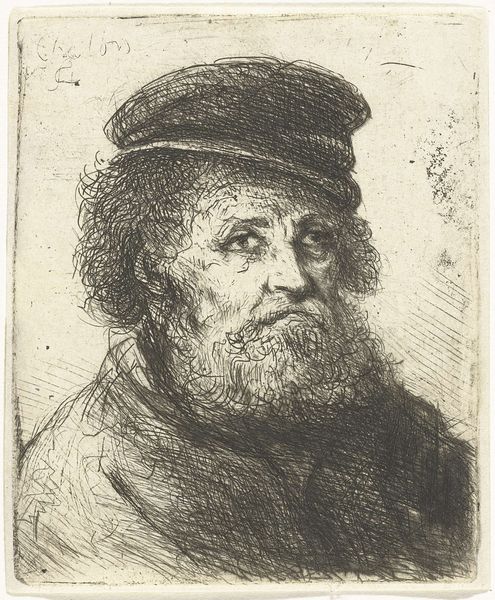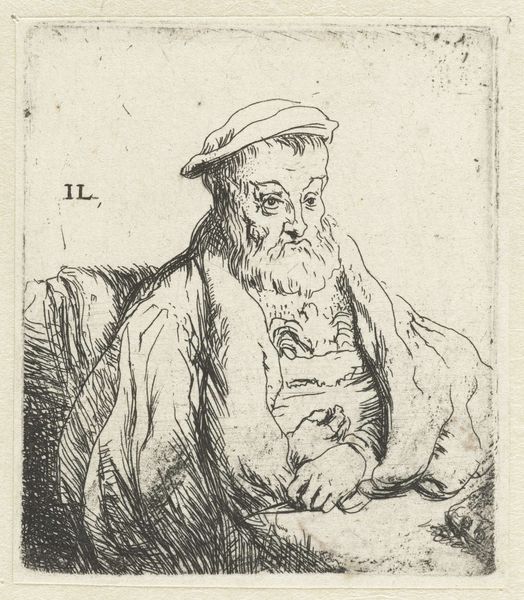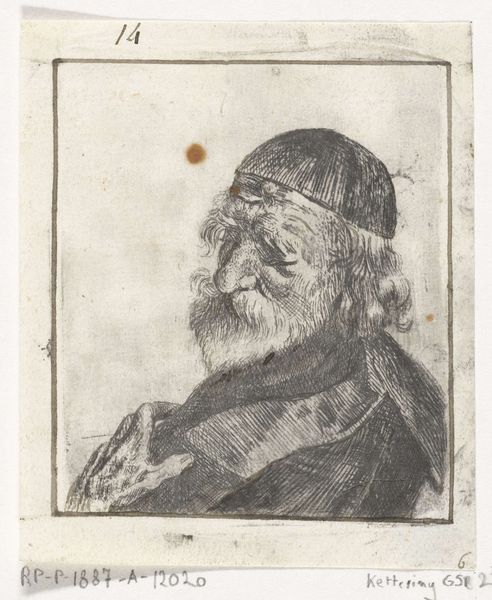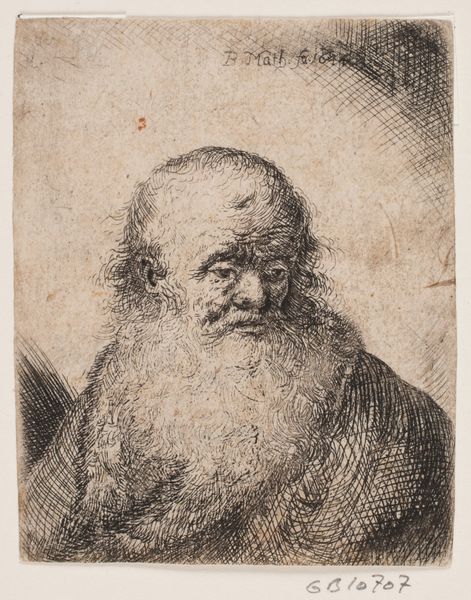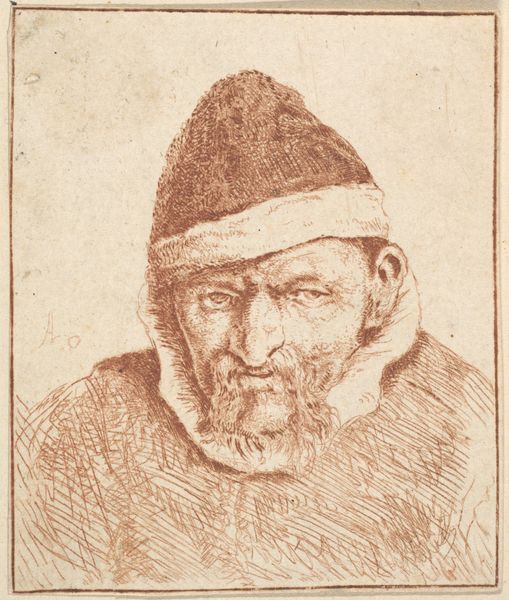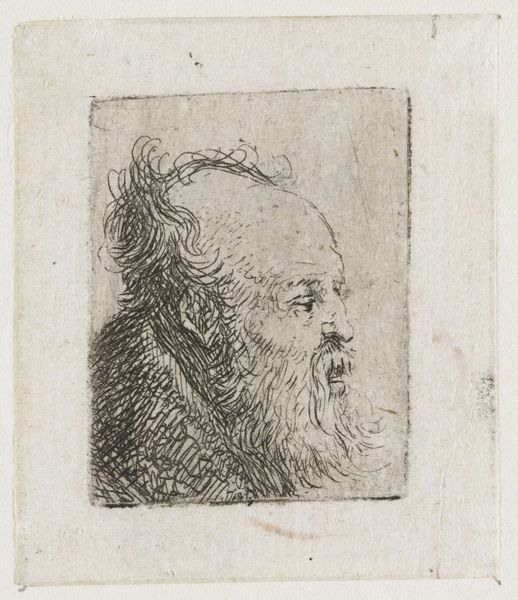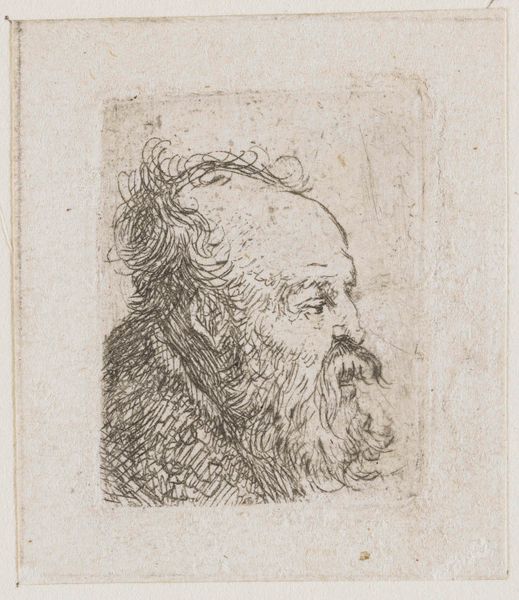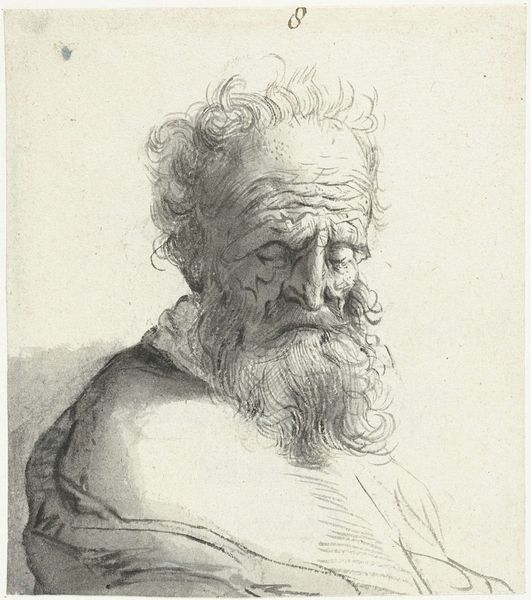
etching, intaglio
#
portrait
#
baroque
#
dutch-golden-age
#
etching
#
intaglio
#
figuration
Dimensions: height 75 mm, width 59 mm
Copyright: Rijks Museum: Open Domain
Curator: Standing here, we observe Jan Lievens’ “Bust of an Old Man with a Beard,” an etching produced sometime between 1625 and 1674 and now held here at the Rijksmuseum. Editor: The immediate impact is quite somber, isn't it? There’s a weariness etched into the very lines of the man's face and beard—pun intended. It gives him a formidable, yet melancholic air. Curator: Absolutely. The etching medium lends itself to a particular type of realism and shadow play. Notice how the intaglio lines vary, building up texture and emphasizing certain areas, especially around the eyes, lending emotional weight. What narratives do you think Lievens is evoking? Editor: Beyond just the artistry, there’s the implied narrative—this isn't just any old man; he feels like a character who has seen and experienced a lot, perhaps someone marginalized or overlooked by society, offering commentary on social hierarchies of the Dutch Golden Age. Curator: Perhaps a philosopher or a religious figure, in that period? Men were frequently portrayed to stand for certain universal wisdom, and wisdom was generally portrayed with age and facial hair. Think Moses, Abraham, etc. He's even wearing a head covering, isn’t he, evoking the garments worn by rabbis. Editor: I appreciate your pointing out the symbolic link with the religious garb. The head covering adds another layer to the conversation. Does it represent humility or wisdom? Perhaps the very deliberate etching seeks to create a kind of everyman representative? I suppose there's something democratic about reproducing his portrait so widely using intaglio. Curator: That’s a compelling thought. And it opens avenues into examining who Lievens' audience might have been, what social function this image fulfilled, or what statements it made about wealth and religion. It’s about seeing the continuities of cultural memory and symbolic weight embedded within these lines. Editor: Precisely! Looking at art as a social mirror reflects our values back at us, while revealing those shadows we try to hide, even now, centuries later. This little piece speaks volumes about who we were and who we continue to be.
Comments
No comments
Be the first to comment and join the conversation on the ultimate creative platform.
